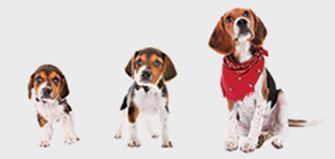
Dog Owner Diaries: Pulling Problems
If you’re like me and love dogs and the outdoors, you’ve got this great picture in your mind of hiking up a mountain with your beautiful pup.
But again, if you’re like me, your beautiful pup pulls like a sled dog during the Iditarod. So are any dreams of conquering mountains alongside your trusted companion destined to be just that, dreams?
In short, no. It’ll take some time, but you can teach your dog to behave on a leash. I’m still working on training Freyja as I write this.
A lot of dogs were bred to move quickly, so walking alongside a slow-moving human is strange for them. Shepherds (like Freyja) and other herding dogs usually have a difficult time adjusting to your seemingly slow motion walking. I’ve noticed that when I take Frey on jogs with me, she has an easy time staying by my side, but as soon as we slow down, she’s back to pulling.
This guide should help you (and myself) in getting our pulling dogs under control.
Like any training, you’ll have to start small. It’s best to wear your dog out beforehand. Try playing some vigorous games of fetch or tug first. You’ll need to exercise your dog in other ways at first, because you’ll want to keep training sessions short and walking while not training will only enforce negative behaviors. Plus, working with a tired dog is much easier.
Start inside your home. If your dog gets excited when you grab the leash, start by fixing that problem. Make your pup sit and wait on your command. This has been the easiest thing for me to train Freyja on. She’s very good at listening to sit commands.
Get your pup to sit and look at you, then slowly clip the leash to their collar or harness. Repeat this process a few times until you’ve both got the hang of it. Remember to give treats for positive behaviors often.
Next, you’ll start by walking your dog in your own home. Be sure to remove any distractions from your home (loud noises, toys, etc.). Walk from room to room with your pup until you she is no longer pulling you.
If you feel tension on the leash, stop and get the dog to sit and make eye contact. It is important to stop before the pulling occurs. So pay attention to signs that indicate your dog is about to pull. Also, reward anytime the dog does not pull for an extended period of time.
Once you feel comfortable with your pup’s progression, move outside. Start in a familiar location like your backyard.
When you begin moving, reinforce the behaviors taught inside. If the dog begins pulling in a direction, stop and make eye contact. Get the dog to sit, and move back in the opposite direction.
When changing directions, it is important to not pull or tug on the leash. You are guiding the dog and teaching her to follow your actions, tugging on the leash teaches her that she can change direction on a tug.
Another technique would be to have some small chewable treats in your hand. First, have the dog walk on the side of you that’s holding treats. Then, have our dog start walking and reward for every two steps that he isn’t pulling. Eventually you want to move on to every five steps, then every 10 steps, and so on.
For this method, you’ll need a lot of treats. Something small or that can be broken into smaller pieces would be best. Something like these No Grainers would work.
If your dog becomes overstimulated by a distraction, it is okay to tug or pull them away. Create distance between the dog and distraction and get the attention back onto you.
Freyja's biggest distraction is squirrels. It’s pretty easy to spot the signs that she’s about to freak out. Her ears perk up, she slows her breathing, and she stops wagging her tail.
This will take time (and patience—plenty of patience). Give yourself and your pup breaks while training. This will keep the dog interested while also keeping you sane.
For training sessions it’s best to use a regular buckle or snap collar and a non-retractable leash. Retractable leashes can be great for normal walks when your pup gets the hang of walking at your pace, but they aren’t the best choice for training.
Remember to be consistent, in training and in accessories. If you train using a harness, your dog might not translate the learned behaviors to using just a collar.
And there you have it. If you follow these steps well you stand a great chance of breaking your dog’s annoying (and potentially dangerous) pulling habit.
Remember, patience and consistency are two necessary ingredients for successful training, so don’t forget them, and don’t allow yourself to be discouraged if things don’t happen as quickly as you hoped. Good luck!














